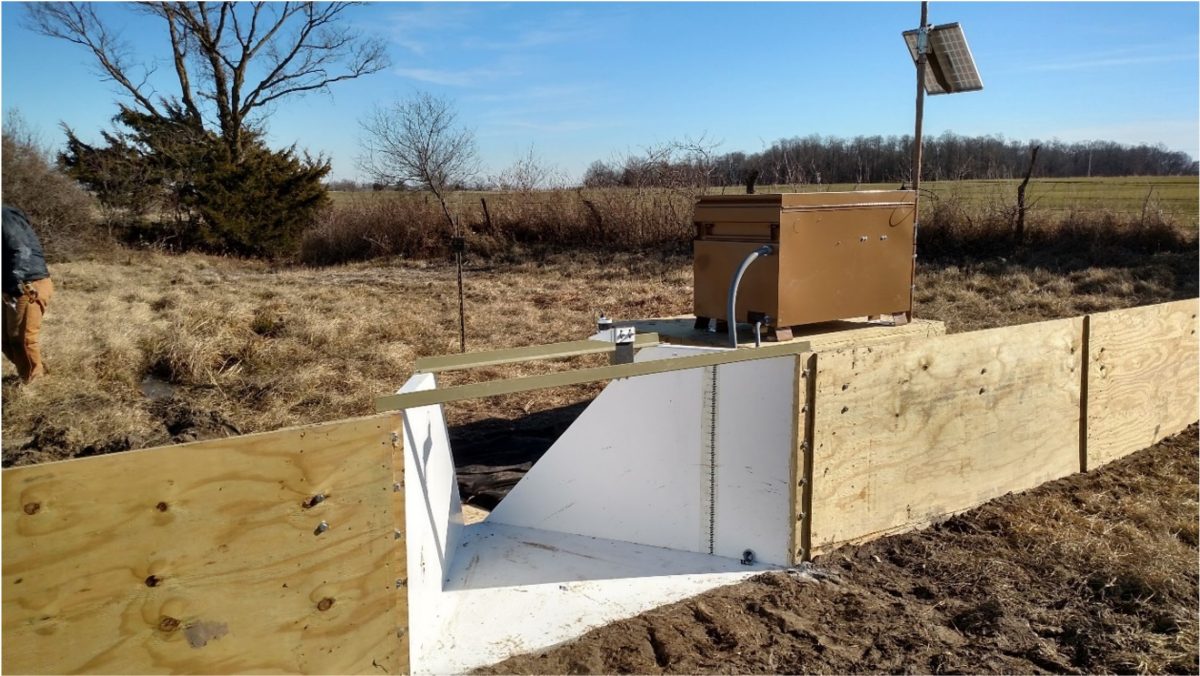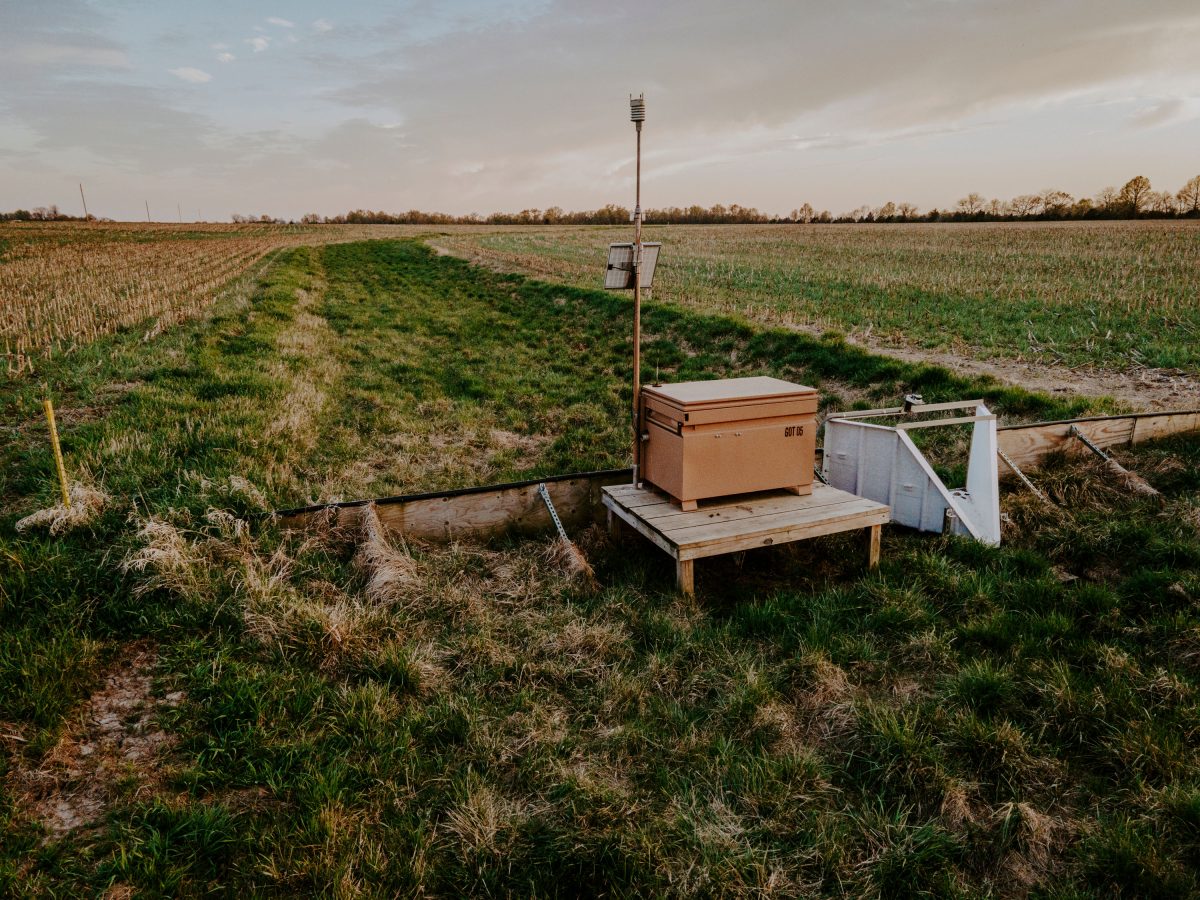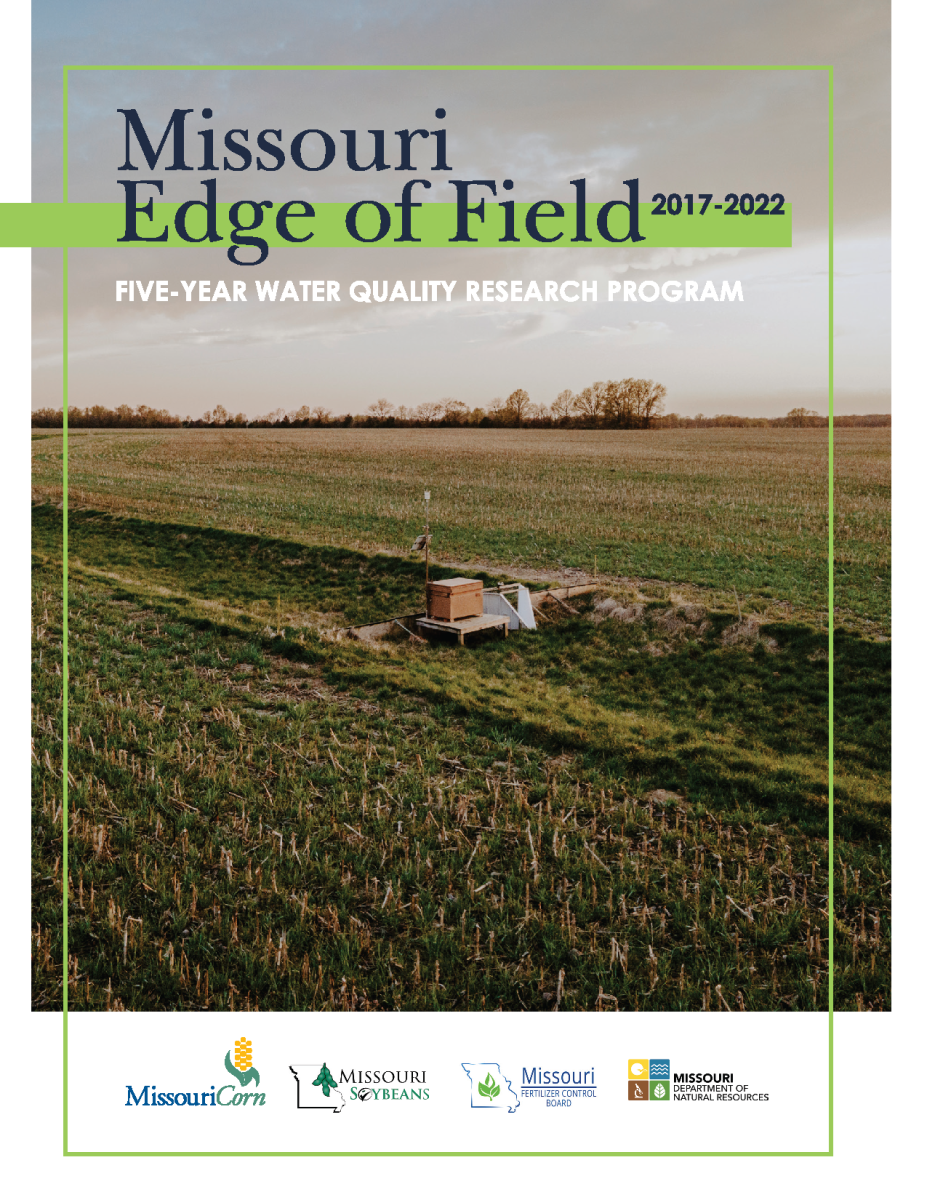Water Quality
The Edge Of Field Monitoring Project
Through the investment of the Missouri Corn and Missouri Soybean Merchandising Councils, the Edge of Field (EoF) Water Quality Research Program was a farmer-driven collaboration conducted from 2017 through 2022. The goals of this five-year research were to (1) quantify the effectiveness of on-farm practices, (2) demonstrate the benefits of voluntary agricultural conservation, and (3) support water quality efforts aimed at meeting state soil and water stewardship goals. While these results may not be applicable to all fields and conditions in Missouri, they represent typical farming practices that are transferable to most conventional farms.
Click here for the full report detailing the results of the 5-year comprehensive research.
Grassed Waterways with Conventional Terracing

When researching the annual runoff and loads leaving the grassed waterway and control plot, values leaving the grassed waterway were found to be significantly lower in all years. The research results from the EoF monitoring study demonstrate and confirm the ability of grassed waterways to reduce runoff, decrease soil erosion, and improve water quality. The average percent reductions were as follows:
- Runoff 50%
- Nitrate (No3-N) 67%
- Total Kjeldahl Nitrogen (TKN) 45%
- Total Phosphorus (TP) 57%
- Total Suspended Solids (TSS or sediment) 64%
Cover Crop Versus Non-Cover Crop on Surface Tile-Drained Field

Comparing the annual runoff and loads leaving the cover crop and control plot, values leaving the cover crop were found to be significantly lower in most years, with average yearly reductions ranging from 12-25%. Overall, results demonstrated the consistent effectiveness of cover crops in reducing runoff, nitrogen, phosphorus, and sediment. The average percent reductions were as follows:
- Runoff 12%
- Nitrate (No3-N) 25%
- Total Kjeldahl Nitrogen (TKN) 19%
- Total Phosphorus (TP) 19%
- Total Suspended Solids (TSS or sediment) 20%
Grassed Waterways with Cover Crops

Examining the annual runoff and loads leaving the treatment and control plots, values leaving the grassed waterway and cover crop combination were significantly lower in all years. The grassed waterway was effective at reducing nutrient loading compared to a terraced field with sheet and rill erosion. The average percent reductions were as follows:
- Runoff 22%
- Nitrate (No3-N) 64%
- Total Kjeldahl Nitrogen (TKN) 77%
- Total Phosphorus (TP) 54%
- Total Suspended Solids (TSS or sediment) 99%
Planning for the Future
If growers want to implement additional conservation practices, now is the time to utilize a variety of state and federal programs available. The results from the EoF monitoring study demonstrate and confirm the ability of conservation practices to reduce nutrient runoff, decrease soil erosion, and improve water quality. With five years of data, there is still more to be learned. The results of this collaborative research – and future projects – can help give farmers the resources to make on-farm management decisions while improving productivity, profitability, and water quality.

